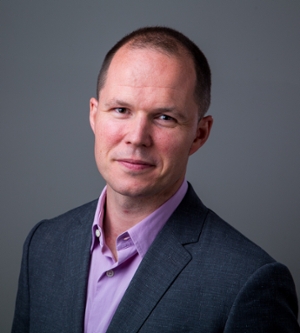Matthew Edwards
I am disabled. I am blind.
I like to begin my columns with this type of statement. Over time I have found that self-identification is important, both to myself and to others. While it helps others understand from where I speak—what is my place in society?—for me, it is a declaration that speaks against the silence that once defined my approach to disability, and the discrimination that plagues many of our social interactions. And although it is at times confusing to some—What does blind mean? How do you see? Do you see…anything?—these are discussions that we have to have. They are important to helping us understand the different ways meaning is constructed. They help us understand that meaning is constructed.
Saying that I AM DISABLED allows me, specifically, to speak in the first place, and, many times, on behalf of a community that is also disabled. However, speaking for other people is problematic in and of itself. In terms of disability, no one experience is the same—we all move, feel and engage with our bodies and minds differently whether you are disabled or not. But, by speaking, by telling our stories, we allow for others to see how we move, and feel, and how our paths cross, coincide with and diverge from the paths of other people, other communities and of other experiences.
My path starts here, with a declaration: I am disabled. Every morning it takes me to the bus stop where it crosses with the lives of other people whose paths also lead, early in the day, to a bus. It is no coincidence that disability brings us together. After all, public transportation is a support system, it is an accommodation that others requested, before us, and on our behalf. Although I am not familiar with the history of public transportation across the United States, it is useful, I think, to consider who the Troost Max bus line—and all others like it—accommodates. Simply put, buses replace cars and help support those who need to move about and specifically support folks who cannot use or purchase a car. That is, public transportation accommodates both physical and mental, as well as “economic” disability.
It is noteworthy that our paths intersect on the bus, and around disability, each morning—and afternoon, in many cases—and that we meet regularly, as a group, due to this point in common. Although we do not talk often to each other, we share the frustrations of bus delays, the joys of good weather and welcome acts of unexpected kindness together. It is also worth noting that if I could drive, and if I could buy a car, I would not likely connect with my Troost Max community. I would not have this experience in common.
Many people look sadly at me when they learn about my daily commute. Some ask if I need a ride—it would be no problem to swing by, they live relatively close anyway. This is similar to the response I get when people learn I am blind—blindness is a broad term and can be hidden, with practice, and some good acting, so I have this conversation regularly. However, my path is important to keep. It is well trodden and its familiarity keeps me safe, even when I stumble—and sometimes fall-- on new sticks on the sidewalk or forgotten cracks in the cement. As I follow this path I come into contact with others who are now familiar to me in their disability, and I am reminded that accommodations bring us together. They help us to understand that being “accommodated” is something you likely have to plan for, so it won’t pass you by. And planning takes time, just like the accommodation itself. Bus routes don’t necessarily go where you need to be. To use them, you need to chart your path ahead of time, and then walk the extra distance.
While time is money, and taking the bus can and does take time away from grading, writing and research, disabled pathways—like the one I have described above— are necessary. They connect different communities, for different reasons, and establish points in common, of shared interest and mutual agreement. Following them help us to understand that disabled pathways do not prioritize progress or productivity. They more often than not lead to confusion and delay. But as we follow them, time is given to us so we can connect. Here, as our differences intersect, the nuances of bus-taking, for example, provide time to think, to learn and to value the experiences of others, as part of our own.